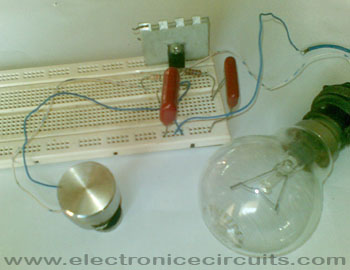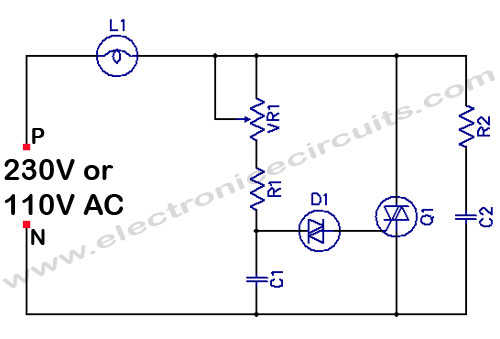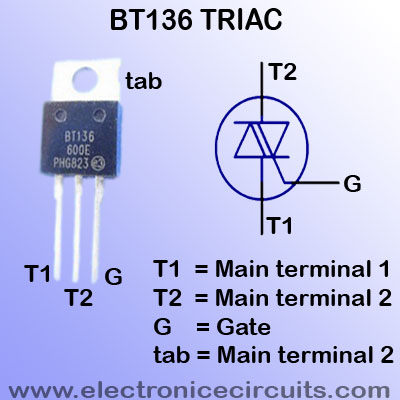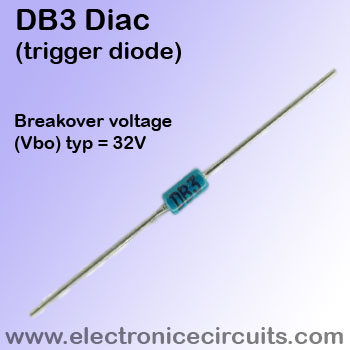
Filament Light Dimmer Circuit
This simple triac dimmer can be used to control incandescent filament lamps up to 200W. The circuit operates on the phase-control principle.

| PARTS LIST | |
| R1 | 10kΩ 0.5W |
| R2 | 100Ω 0.5W |
| VR1 | 500kΩ Potentiometer |
| C1 | 330n (0.33µF) |
| C2 | 100n (0.1µF) |
| D1 | DB3 Diac |
| Q1 | BT136 Triac |
| L1 | Filament Light |
The main control is provided by VR1. This determines the rate at which C1 charges and hence the point along the mains waveform at which the voltage on C2 reaches the breakdown voltage of the diac (D1), which is when the triac is triggered.
 |  |
| BT136 Triac pin configuration | DB3 Diac |
Interference suppression is provided by R2 and C2.
This light dimmer is directly connected to mains. So be careful.
The potentiometer should have a plastic spindle.
Please send your ideas, which are very important for our success…
Great site. A lot of useful information here. I’m sending it to some friends!
Pretty nice post. I just stumbled upon your blog and wanted to say that I have really enjoyed browsing your blog posts. In any case I’ll be subscribing to your feed and I hope you write again soon!
Helpful blog, bookmarked the website with hopes to read more!
The cheapest commercial light dimmers omit C2 and R2. The best interference-suppressed triac dimmers add a choke — 20 to 30 turns of heavy Formvar insulated solid copper wire wound on a ferrite slug — in series with the dimmer. The purpose of the choke is to slow down the fast switching edges and reduce radio frequency interference (RFI) that can wipe out radio reception on the AM band for radios in the same room or adjacent rooms. At 2011 prices, the cheapest dimmers can be purchased for $6 to $10. The better interference-suppressed dimmers can cost $25 to $30. Choosing a triac with slower switching characteristics will greatly reduce radio frequency generation at the expense of requiring a larger heat sink.
thanx
Is Dimmable CFL (Compact FLuorescent Lamp) Ballast applicable for this circuit instead of incandescent filament lamps?
Hi,
Great site with awesome projects, thanks and keep going.
I’ve got a question, can we use this circuit to control the speed of a motor, like simple drilling machine (about 750 W)?
Thanks again..
Awesome…thnx
very good project
Please help me. Is it ok if i replace the filament light to LED light? And what type of capacitor did you use in the circuit? Thanks. 🙂
Thank you very much. Please need an idea when i go to the shop they don’t know diac or triac, just give me another named. which is known the shopper?
nice post , thank you
very good
Thank you very much
esta bueno todo pero no anda este proyectoooo, esta mal puesta la carga